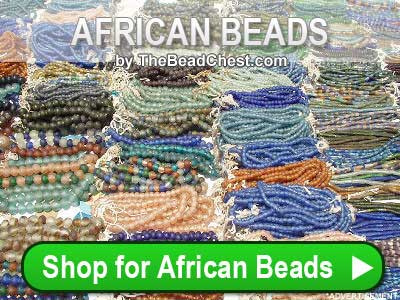I’m a huge fan of Batik Bone Beads from Ghana. With their two-tone coloration and beautiful hand-painted designs, they can really add to the authenticity of a tribally inspired necklace. Unfortunately, many people are put off using these beads in their jewelry creations owing to misconceptions about the kind of bone used, and how it is sourced. So, I thought I’d use this opportunity to dispel a few myths, and tell you a bit more about where they come from.
1. Bone Beads Are Made From Hunted Animals
Despite legislation prohibiting poaching in many parts of Africa, there are some areas where the illegal hunting of certain species is still a huge problem. However, illegal poaching is more prevalent in places like Kenya – not Ghana. The vast majority of the Krobo and Ashante populations in Ghana are animist in faith, therefore don’t believe in the hunting of animals for personal gain.
2. Animals Are Purposely Killed to Make Bone Beads
As mentioned above, both the Krobo and Ashante tribes are animist in faith, and many also believe that their ancestors are present in all living things. For this reason, they don’t kill animals for sport or pleasure. The cattle bone used to make Bone Beads is sourced from cows and buffalo once they are deceased, so no animals suffer at any stage.
3. Bone Beads Are Made From Man-Made Substitutes
The international bead market is saturated with imitations and replicas from China and India, however, these countries are significantly more advanced (compared to Africa) in terms of the technology needed to produce synthetic beads from plastic, acrylic and porcelain. To this end, when you buy Batik Bone Beads from a genuine African source, you can pretty much guarantee you’re getting the real deal!

 African beads, trade beads, and antique beads have been enjoyed by many for centuries. African beads are treasured for their history. Many have traveled over 3 continents and can be up to centuries old. This blog is devoted to providing you with accurate information on African beads, trade beads, and antique beads. We hope you enjoy our blog!
African beads, trade beads, and antique beads have been enjoyed by many for centuries. African beads are treasured for their history. Many have traveled over 3 continents and can be up to centuries old. This blog is devoted to providing you with accurate information on African beads, trade beads, and antique beads. We hope you enjoy our blog!